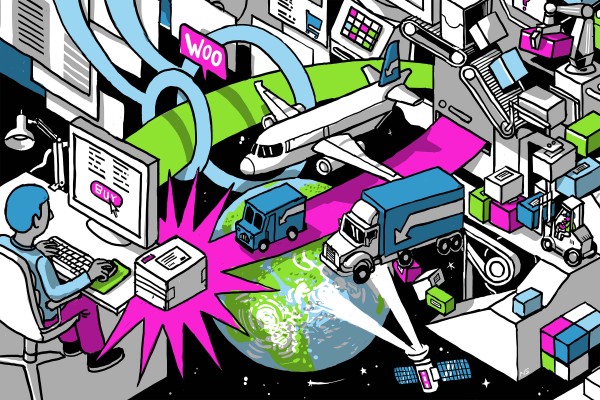Automattic EC-1 Part 3: Acquisitions and future strategy

Despite Automattic’s respected position, awareness of its myriad businesses tends to be spotty.
“I spend a lot of time with investors, press and research analysts, and I’m always stunned that people say, ‘We know WordPress.’ But they don’t know Woo,” says Mark Davies, Automattic’s chief financial officer, referring to the company’s WooCommerce subsidiary. “It’s always interesting when we say we’re doing $30 billion of payments volume through Woo and Automattic.”
Why should they care? For starters, WooCommerce is used by more sites than Shopify — which those same investors, press and analysts definitely know about.
It’s also the lifeline that Automattic needs this decade to rebuild the internet in an open direction. Sixteen years after its founding, the company has seen its valuation grow rapidly from $3 billion with a round led by Salesforce in 2019 to $7.5 billion with a share buyback a few months ago. That growth has been predicated on expanding beyond its traditional remit of publishing into the hugely lucrative terrain of e-commerce, as well as through its acquisition of Tumblr.
The strategy here is simple: Continue opening up larger swaths of the internet to open-source innovation outside of the walled-garden platforms developed by Amazon and Facebook. If Automattic’s strategy works out, Woo, Tumblr and WordPress will link to new services that nobody yet associates with Automattic.
It’s an audacious vision, but the company is setting itself up for a battle against some of the most formidable — and deeply pocketed — companies in the tech world.
From custom themes to billions in payments volume

WooCommerce logo. Image Credits: Wikimedia
WooCommerce began life as WooThemes, a small design firm that didn’t look very different from the many others that created WordPress themes. In 2011, the company expanded to build themes for online stores.
“They’d spotted an opportunity where a lot of the themes they were selling were more commerce oriented, so they hired some guys they were incubating for a commerce platform, brought them into the team, and that quickly overtook the company for the lion’s share of attention,” says Paul Maiorana, the current CEO of WooCommerce, a subsidiary of Automattic.
Despite WooCommerce’s popularity (its plugin was among the top 10 most popular for WordPress), its success was mostly contained within the broader WordPress ecosystem. When Automattic acquired WooCommerce in 2015, the move went mostly unnoticed in the broader tech community.
WooCommerce still had less than 100 employees, and it didn’t appear to be a significant buy. E-commerce, while obviously growing, had yet to reach stratospheric highs.
Internally at Automattic, there were uncertainties over whether WooCommerce was worth the purchase, the value of which was never disclosed but was described to TechCrunch at the time as “the biggest acquisition by Automattic to date.”
“Even at the board level, we honestly asked if we should even be doing this. Everyone is saying this is a bad idea and you can’t compete with Amazon,” recalls Matt Mullenweg, Automattic’s founder and CEO. The counter view was that it was important for Automattic to cover all its bases. “Our ambitions are incredibly broad, and we take a very long-term view.”
Before long, WooCommerce was exploding in size, and the acquisition proved to be one of the most important decisions Automattic had ever made. “I’d call it a significant moment, like the birth of a child,” says Mullenweg.

You must be logged in to post a comment.